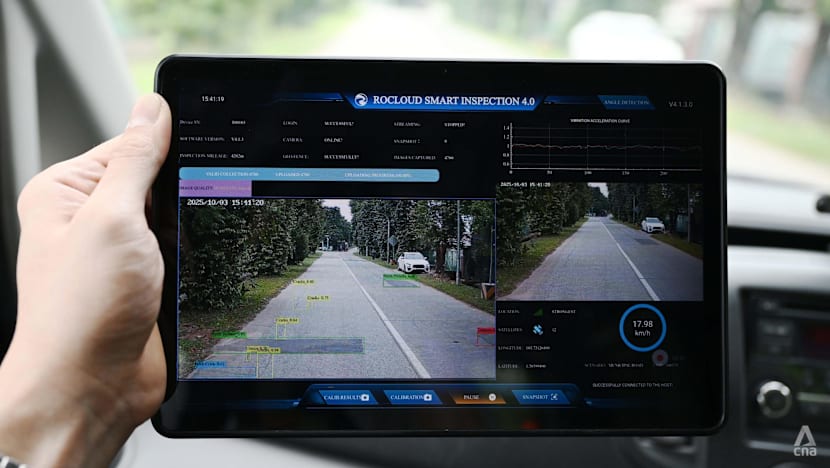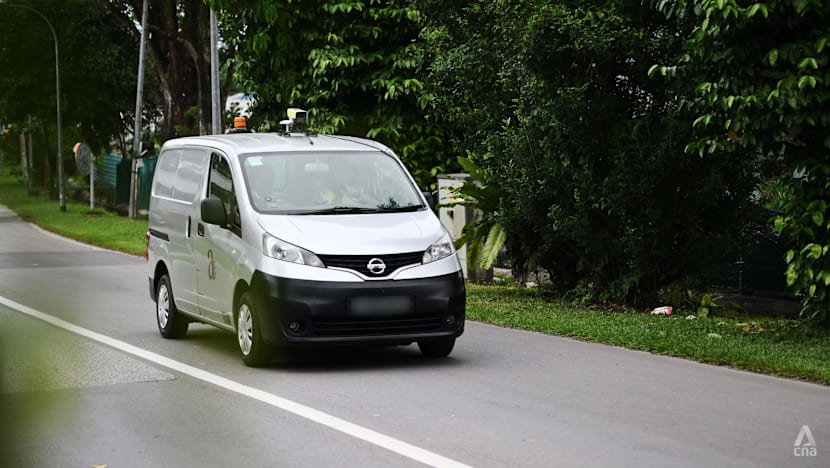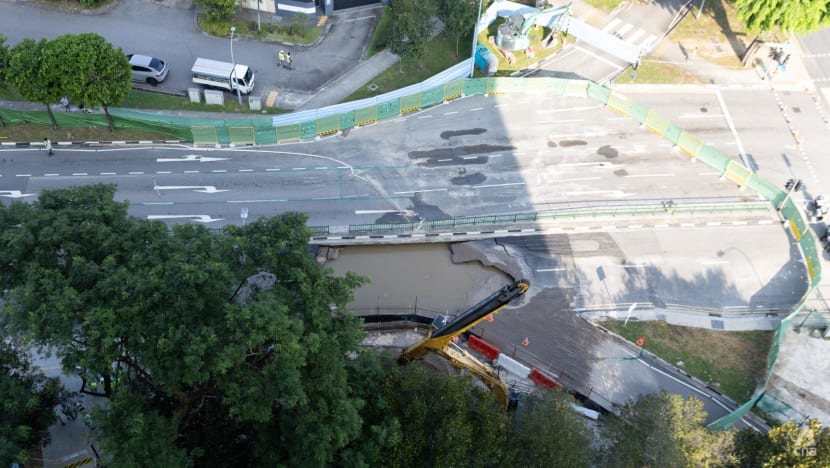How does Singapore detect potholes on roads? With AI
Artificial intelligence is being used to detect potholes and other road defects in Singapore with over 90 per cent accuracy.

The camera mounted on a vehicle is able to detect defects on the roads such as cracks, potholes, ponding, and damaged road signs using artificial intelligence. (Photo: CNA/Marcus Mark Ramos)

This audio is generated by an AI tool.
SINGAPORE: Artificial intelligence and video analytics are increasingly being deployed to keep Singapore’s roads free of defects such as potholes, the Land Transport Authority (LTA) said.
A system that uses a camera mounted on a vehicle has been operating in the southwest of Singapore since June. It scans the roads for defects such as cracks, damaged pavements and blurry convex mirrors.
Dubbed the Road Maintenance Management System, it uses AI to flag defects and their locations on a central platform, allowing maintenance teams to be notified via an app and dispatched almost immediately.
While this system is currently being piloted in the west, the AI system behind it has been used islandwide since 2023. However, instead of a specialised camera, a smartphone with a high-definition camera is mounted inside an inspection vehicle, and the video footage captured is processed later to identify defects.
However, rectification is slower under this older system, as defects that are spotted will first be presented in an AI-generated report before workers are dispatched on site to rectify the defects.
The AI technology behind both systems can detect potholes with over 90 per cent accuracy.
Before AI was introduced, road defects were spotted manually by inspectors who were driven slowly along roads to allow visual identification of issues.
This labour-intensive approach required a team of 32, including drivers and inspectors. The new AI-based workflow has reduced the team size to just 12.

ROAD MAINTENANCE REGIME
LTA said it conducts regular inspections and maintenance across the road network, alongside preventive maintenance such as resurfacing and rehabilitation.
Expressways are inspected weekly, major roads every two weeks and minor roads every eight weeks.
Under the resurfacing programme, expressways are typically resurfaced every seven to 10 years, major roads every 10 to 15 years and minor roads every 15 to 25 years.
LTA said it also uses maintenance data to plan preventive resurfacing, which has helped improve road quality and reduce costs over time.
The number of potholes detected fell from 4,517 in 2022 to 3,013 in 2024 – a 33 per cent decrease. As of September this year, 1,887 potholes have been recorded.
Preventive maintenance is “not only more effective in maintaining better road conditions but also proves more cost-efficient in the long term with lesser intervention works,” LTA said.
CONCERNS ON ROAD SURFACE MAINTENANCE
The condition of Singapore's roads came under scrutiny after a large sinkhole appeared along Tanjong Katong Road South on Jul 26.
Authorities said investigations into the incident could take several months.

LTA said potholes are “surface-level deteriorations” manageable through routine maintenance. In contrast, sinkholes are severe structural defects that form deep underground.
They can be caused by underground or excavation works, natural processes such as the erosion of underground limestone geological layers by acidic water, damaged or leaking water and sewer pipes or ungrouted abandoned pipes. Grouting is the process of filling gaps to stabilise structures.
“Unlike potholes, sinkholes require in-depth investigation and extensive engineering intervention due to their scale and complexity,” said LTA.
However, when deeper underground issues creep near the surface, inspections using AI may be able to pick up telltale signs such as road depressions which could prompt further investigation.














